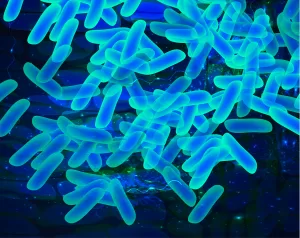In recent years, the focus on polymers in single-use films within the biologics industry has moved from niche detail to critical importance.
This is because biologics manufacturers are now increasingly sophisticated about material sciences as a whole. The industry understands how the structure and materials of a single-use film can impact the final bioprocessing product.
For example, in 2012, manufacturers discovered a contaminant known as Irgafos 168®, or bis(2,4-di-tert-butylphenyl) phosphate (bDtBPP), in single-use film used in biologics manufacturing. They cited it as inhibiting cell growth for CHO cell lines.
This discovery changed the way biopharma customers began discussing polymers and single-use films. This resulted in the industry’s more sustained focus on material sciences, in particular, additives that may introduce issues with leachables.
Now, single-use film suppliers must anticipate certain requirements (and questions) from their clients. Foremost among client concerns: how the right polymer additives minimize potential risks, alongside an awareness of the impact of product contact.
Single-Use Film Stabilizers and Additives
Stabilizers and additives provide functionality based on application needs. However, while additives change the properties of plastics to give the desired performance, they also introduce the risk of leachables, which directly affect the final product with detrimental effects.
Despite these challenges, additives can provide benefits, such as improving film strength, durability, flexibility, temperature sensitivity, and visibility. Certain additives result in improved gas permeation, oxygenation, fluid absorption, vapor barrier, and UV transmittance.
Although the biologics industry faces strict regulation, the FDA does not oversee single-use films. Standard-setting bodies such as USP, ASTM, and BPOG set the quality attributes.
Manufacturers produce films using thermoplastic polymers, many of which exhibit poor gas permeability.
That said, the need for gas permeability depends on the application. For example, certain cell culture processes require gas exchange to prevent carbon dioxide buildup. But in other processes, it is crucial to maintain constant carbon dioxide levels to maintain pH levels. Materials science for films has advanced in the last decade, as more biopharma customers understand how film plasticizers and additives affect cells.
Stabilizers and additives provide functionality based on application needs, but there can be trade-offs. Additives can alter plastics’ properties to achieve a desired performance, but they may also introduce the risk of leachables.
Despite the challenges, additives can provide benefits, such as improving film strength, durability, flexibility, temperature sensitivity, and visibility. Additives can also result in improved gas permeation, oxygenation, fluid absorption, vapor barrier, and UV transmittance.
Popular Polymer Combinations
Although there are hundreds of films available for bioprocessing applications, the majority of the films favored by bioprocessing firms feature some combination of the following polymers:
- Polyethylene (“PE”) is the most used thermoplastic, by sales volume. LDPE, LLDPE, ULDPE, and mPE are different types of polyethylene films with varying levels of flexibility, crack resistance, and gas barrier properties.
- Ethylene vinyl acetate (“EVA”) is a flexible and puncture-resistant polymer popular for its low cost and improved gas barrier properties relative to LDPE.
- Ethylene vinyl alcohol (“EVOH”) is used as a gas barrier in multi-layer films, preventing reactivity with surface gases while retaining the contents’ composition.
- Polyamide, or nylon, is a thermoplastic known for its strength, toughness, good oxygen barrier properties, and its scratch/puncture resistance.
- Cyclic Polyolefin Copolymer (“CoC”), also known as Topas®, is a high-temperature polymer that exhibits excellent barrier properties against water vapor. Cytiva is the only film manufacturer studied that uses CoC as part of its film offering, specifically in a 10-layer film that is the only one of its kind on the market. CoC has lower water absorption, high rigidity, and good clarity, making it suitable for applications requiring high transparency. Its unique combination of properties also makes it an ideal choice for packaging of sensitive products that require high barrier protection against moisture and oxygen.
Selecting the appropriate film for a specific packaging application is crucial for ensuring product safety and longevity. There are multiple factors to consider when choosing a film, including a product’s properties, storage conditions, and environmental impact.
It’s essential to consult with a packaging expert to determine the best film for your application and ensure that it meets regulatory requirements. By selecting the right film, businesses can protect their products, reduce waste, and enhance the overall consumer experience.
Need a consultation? Contact MKA Insights to set up a consultation today.



